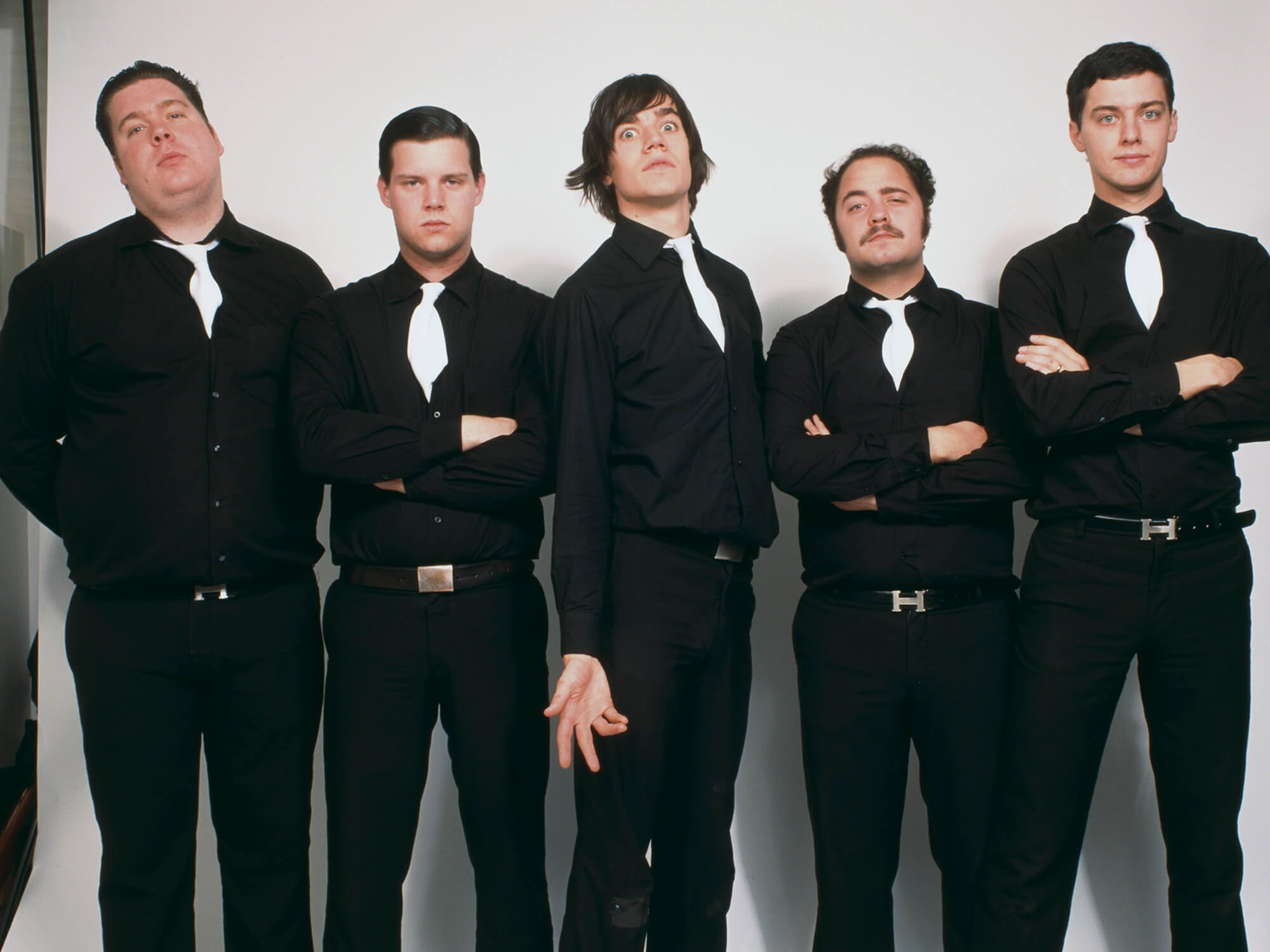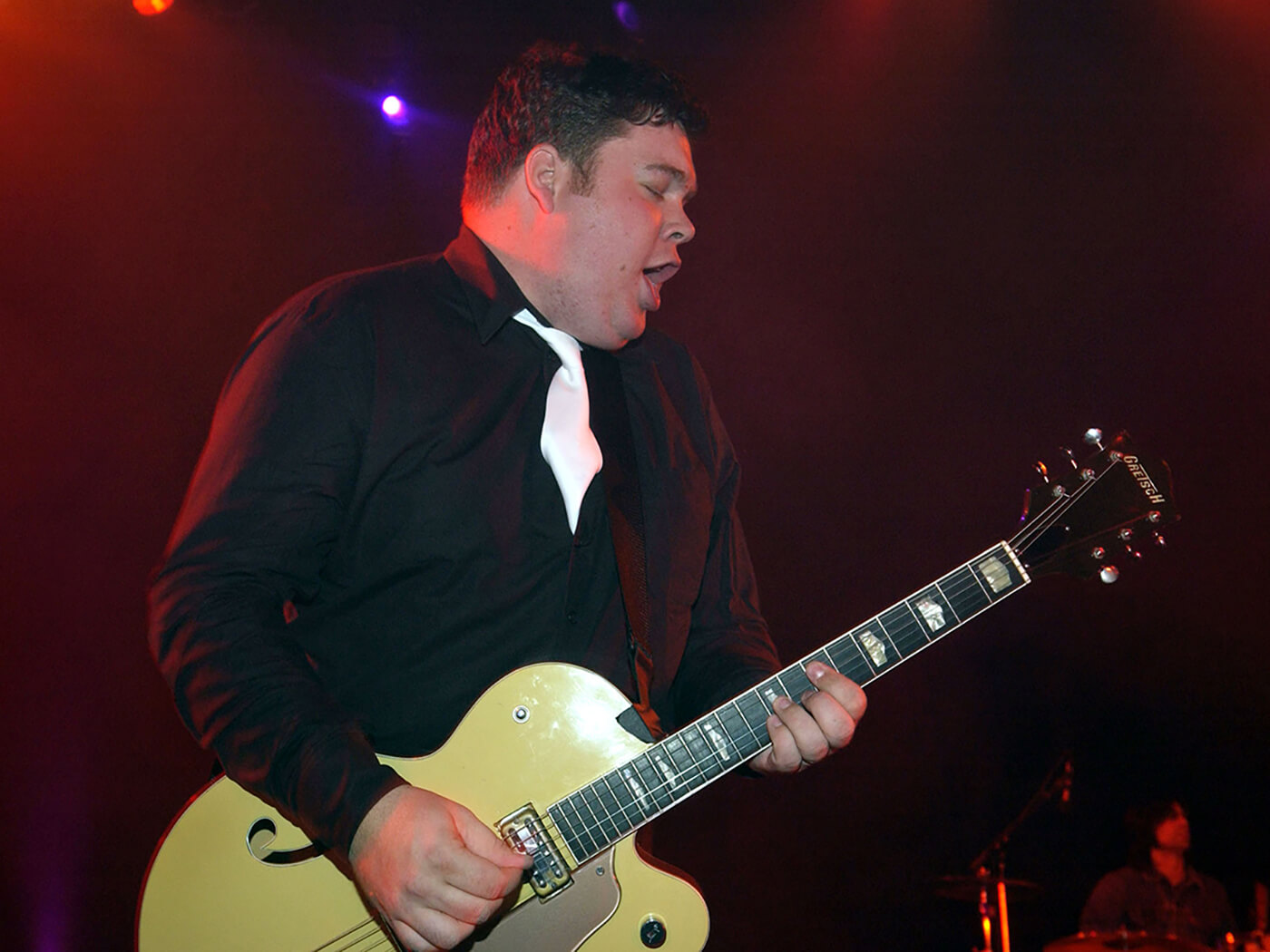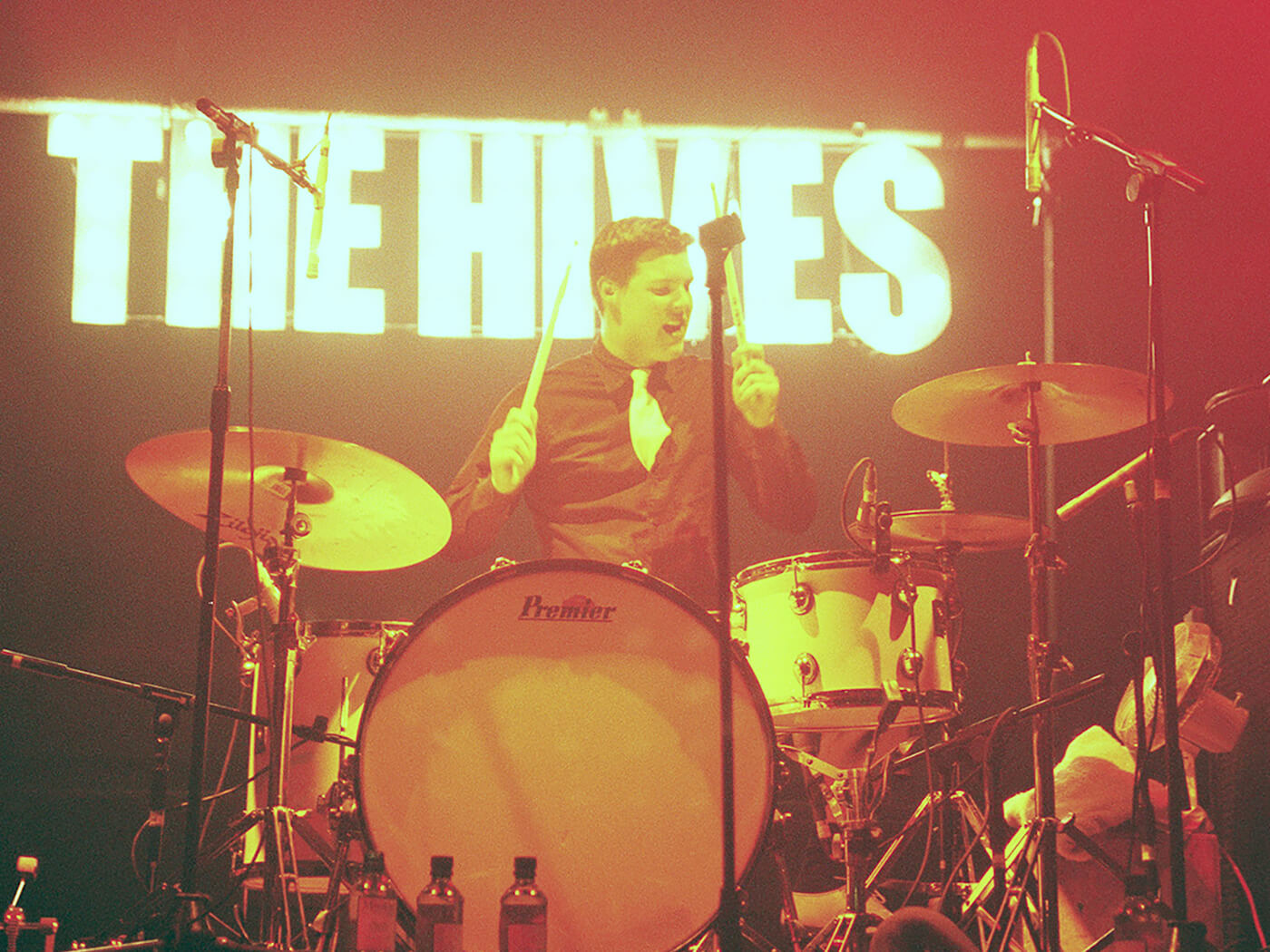Related Tags
The Genius Of… Veni Vidi Vicious by The Hives
Don’t be fooled by their matching suits, this band doesn’t care for keeping things clean and classy. Welcome to The Hives and their unmatched era of Veni Vidi Vicious.

From left to right, Vigilante Carlstroem (Mikael Karlsson), Chris Dangerous (Christian Grahn), Howlin’ Pelle Almqvist (Per Almqvist), Dr. Matt Destruction (Mattias Bernvall) and Nicholaus Arson (Niklas Almqvist). Image: Tim Roney/Getty Images
The Hives have spent the last few months reminding Arctic Monkeys fans why they remain one of the very best live acts around, so what better excuse to throw back to one of the most eccentrically marketed but foot-tappingly infectious albums of the early 2000s? April 2000 saw Swedish rock band The Hives release their second studio album Veni Vidi Vicious. Hitting right on the cusp between the second wave of pop-punk and the early stirring of the garage-rock revival, they were a little hard to pigeonhole at the time, but it really didn’t matter when you come out with a song like Hate To Say I Told You So.
The album’s lead single has become their iconic track and it��’s not hard to see why? It’s brazen, catchy… a little obnoxious, and almost nursery rhyme-simple, with a simple powerchord riff straddling the worlds of punk and the nascent indie-rock scene with a level of gain that was heavy enough to sit on rotation on MTV2’s schedule but still edgy enough to be danced to in a New York club.
Almost as effective as Hate To Say I Told You So was the marketing campaign around the band. Magazines were full of rumours that the band had been put together by a Svengali-type figure by the name of Randy Fitzimmons – who wrote all the band’s music, and had merely recruited the members to act as his puppets on stage and in the studio.
The aura of mystique was helped by each of the band members taking on a pseudonym – Howlin’ Pelle Almqvist on vocals, Nicholaus Arson on lead guitar, Vigilante Carlstroem on rhythm guitar, Dr. Matt Destruction as bassist (who later left the band in 2013), and Chris Dangerous behind the drums.
Fitzimmons, so it was told, had promised to make the band global megastars in exchange for them submitting their talents and indeed their very identities to his creative vision, and Veni Vidi Vicious – which also spawned stellar follow-ups Main Offender and Die, All Right! — looked set to prove him right.

It was a far cry from the band’s early efforts – the five-piece had been plugging away since 1993 with little but their moderately well received but commercially uneventful debut album, Barely Legal, whereas Veni Vidi Vicious would crash the Billboard Top 200, with Hate To Say I Told You So certified Gold in the UK.
The Hives felt in many ways like a glorious throwback to the Kinks, the Jam and other 70s bands that managed to mix style with hooks in liberal style – and you sense that was very much the point.
The catch, of course, was that it was all a ruse – Randy Fitzsimmons didn’t exist, with NME unmasking him as Niklas Almqvist, aka Nicholaus Arson, the band’s lead guitarist. Despite this ‘unmasking’ the band have continued to commit to the bit – they claim that Almqvist is not in fact Randy Fitzsimmons, and all of the band’s songs remain credited solely to this enigmatic character to this day.

The title of their imminent sixth album (their first in 11 years) however, seems to indicate that maybe the band are ready to final reveal the truth – can The Death Of Randy Fitzsimmons be anything else?.
Perhaps without them intending it to, Veni Vidi Vicious became the sonic blueprint of The Hives – it was punk yet colourful, allowing it to infiltrate the charts globally. And if Arson really is Randy, his knack for a guitar hook might explain why the record is so replete with ear-worms.

Minus a Danelectro U-2 which he played only once in the video for Hate To Say I Told You So, Arson is a loyal fan of the humble Fender Telecaster – a suitable instrument for a band that lives to play stripped down garage rock.
These days he’s often caught playing a custom 1970s model, but back in this time he most often played his custom Sundberg “Arsonette” equipped with a Lace Sensor. It was designed to be a hybrid of a Tele and a Gibson Firebird, and it features in a lot of their live performances from this era, including their appearance at the 2002 MTV VMA’s showcasing the album’s second single, Main Offender.
Rhythm guitarist Carlstroem was broader in his choices back then, having played a range of axes from a white Epiphone ET-290 Crestwood, a Gretsch G6128T Duo Jet, a ’60s Gibson SG Junior, and he’s since been a longtime player of a 1959 Epiphone Coronet. Back during this time he purchased it in mint condition, but these days it’s looking battered and bruised.
Arson usually played straight into his amps, but enjoyed the odd Boss pedal from time to time – in fact, the Boss AW-3 Dynamic Wah is used for the intro of Hate To Say I Told You So.
Carlstroem on the other hand is a fan of the fuzz, with a favourite of his being the Z.Vex Fuzz Factory (as he later told Premier Guitar in a rig rundown in 2013).

Perhaps that’s the magic of Veni Vidi Vicious – its scorching tone didn’t come from an overly complex rig, it came from humanness. And in an era where everyone is fighting about digital versus analogue, and we’re constantly chasing new effects for that life changing tone, listening to this record is the perfect way to hit reset on your ideas about what gear you actually need.
The Hives continue to declare that rock should always be cheeky and fun, most bands grow tired of their early material, particularly when one single dominates their reputation, but they never shy away from the bragging rights of having Veni Vidi Vicious as the record that took them all over the world. Maybe Randy Fitzsimmons isn’t real, but he kept his promise.
